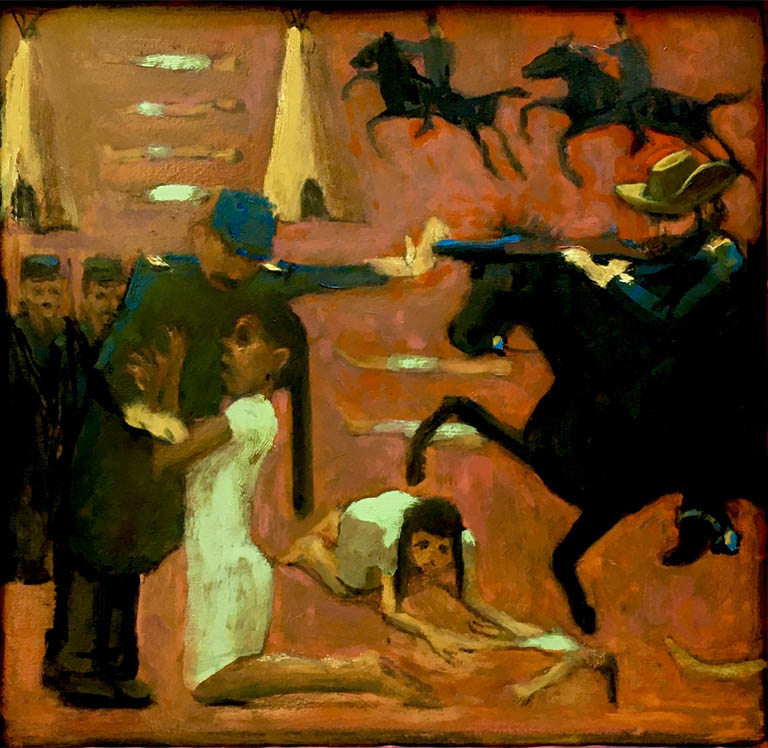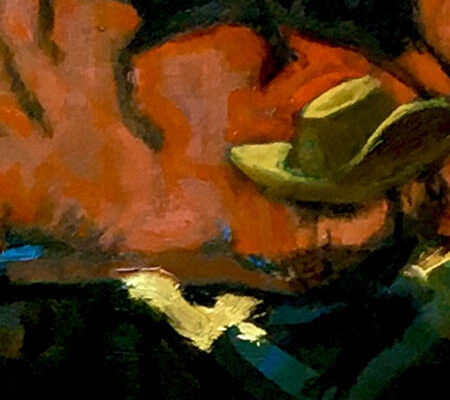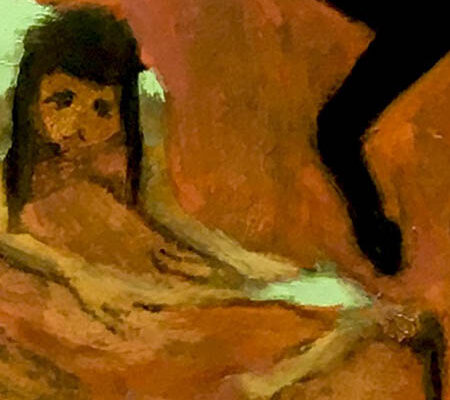Sand Creek Massacre
oil on panel, 14″ x 13.5″, 2020
I learned from Fran Reagan the story of the people of Sand Creek and Captain Silas Soule standing up to his mad colonel, John Chivington.
Though there are Native American-looking primitive elements in the painting, my approach to this subject was influenced by the paintings at Dura-Europos (see the About page for more on that), Like in Dura-Europos I started with the piece being decorative (found an antique tin-clad frame from a farmhouse), also the red background is based on the Dura-Europos earth-red backgrounds of several of the paintings, the horse and riders and dead people are derived from Dura-Europos synagogue images.
I had sympathy with German Expressionism because it’s concerned with people … and the New York School most certainly was not.
It was always drilled into us by the Museum of Modern Art that any semblance to anything human became commercial, but it’s just the other way.
[New York] is the packaging center of the world. The most natural thing was for abstract art to be based in New York. It’s commercial. It’s what they taught everywhere. It’s the way you get a job.
Man is the main concern[-interest-fascination-focus] of man. If it isn’t, art is designing wrapping paper — Jack Levine (in Boston Modern, 2005, Judith Bookbinder)
Today is another time and place than when Jack Levine said those words. But I was recently at the Boston Institute of Contemporary Art (co-founded by Jack Levine’s teacher Denman Ross) and people were posing for snapshots in front – and I mean right in front – of an artist’s image of colorful polka dots, as though the art was their background. Would you shoot a selfie in front of a Leonardo? (well, maybe …)
[Bob Dylan] asked me what I knew about the Sand Creek Massacre of 1864. When I answered, “not enough,” he got up from his folding chair, climbed into his tour bus, and came back five minutes later with photocopies describing how U.S. troops had butchered hundreds of peaceful Cheyenne and Arapahoe in southeastern Colorado. — Douglas Brinkley, Bob Dylan Has a Lot on His Mind, June 12, 2020, NY Times





